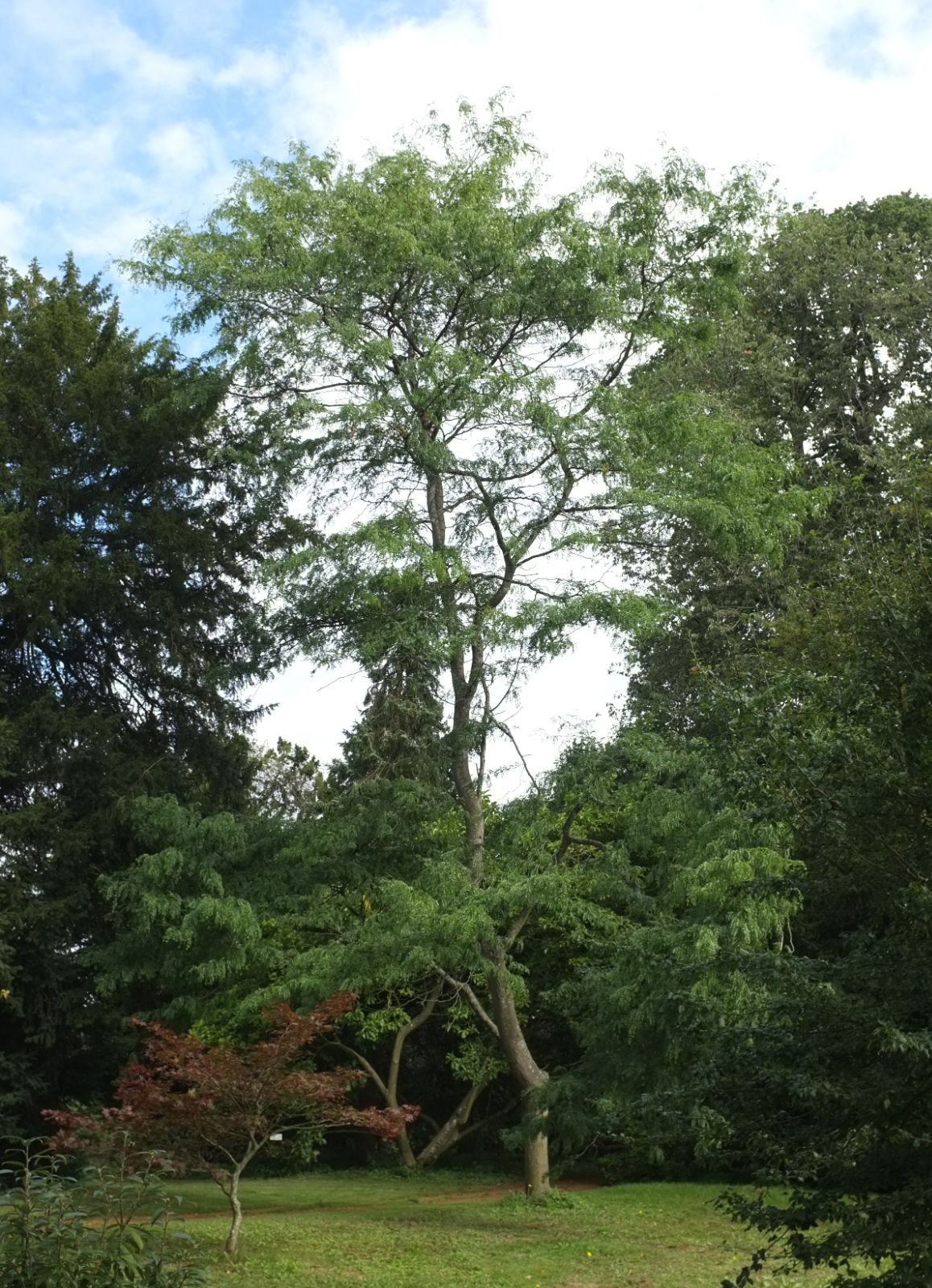Gleditsia × texana
Credits
Article from Bean's Trees and Shrubs Hardy in the British Isles
Recommended citation
'Gleditsia × texana' from the website Trees and Shrubs Online (treesandshrubsonline.
Genus
A deciduous tree up to 120 ft high with smooth, pale bark; young shoots glabrous, branches spineless. Leaves 4 to 8 in. long, the main-stalk at first hairy, pinnate or bipinnate, with six or seven pairs of pinnae, each carrying six to sixteen pairs of leaflets which are oblong-ovate, 1⁄2 to 1 in. long, very shallowly toothed, apex rounded, scarcely stalked, dark shining green. Flowers in glabrous racemes 3 or 4 in. long, the males dark orange-yellow. Pod flat, 4 to 5 in. long, 1 to 11⁄4 in. wide, dark chestnut-brown without pulp.
A natural hybrid between G. triacanthos and G. aquatica, found only in a grove on the bottom lands near Brazoria in Texas, first noted in 1892; introduced to cultivation in 1900. In foliage it is like G. triacanthos but differs in having no spines; from G. aquatica it differs by its many-seeded pods.
There is a small specimen at Kew, planted 1900.

